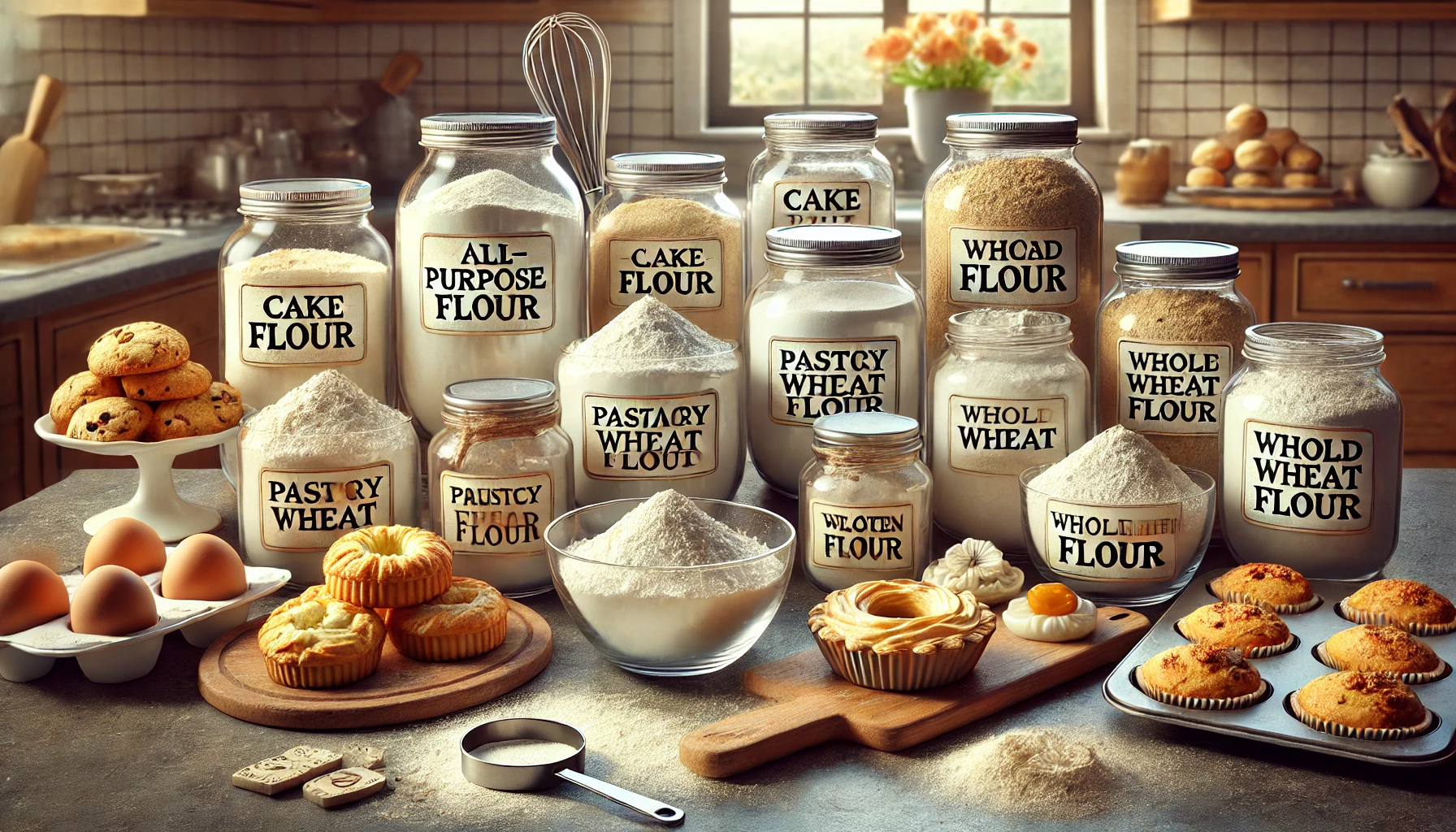Flour may seem like a basic ingredient, but in baking, it plays a huge role in determining the texture, structure, and even taste of your desserts. Choosing the wrong type can leave you with dry cakes, tough cookies, or dense muffins.
In this article, you’ll learn how to choose the best type of flour for each kind of dessert, understand flour labels, and avoid the most common flour-related baking mistakes.
Why Flour Type Matters
Flour is the base structure of most baked goods. The key difference between flours? Their protein content, which affects gluten development — the elastic network that gives baked goods their chew or tenderness.
| Flour Type | Protein Content | Best For |
|---|---|---|
| Cake flour | 6–8% | Light cakes, cupcakes |
| Pastry flour | 8–9% | Tarts, pie crusts, muffins |
| All-purpose flour | 10–12% | Cookies, brownies, pancakes |
| Bread flour | 12–14% | Breads, chewy cookies |
| Whole wheat | 13–14% | Dense desserts, hearty muffins |
| Gluten-free flour | Varies | GF cakes, cookies (needs blend) |
1. Cake Flour: For Light and Fluffy Desserts
Low protein, high starch = less gluten and super tender results.
Best for:
- Sponge cakes
- Angel food cake
- Cupcakes
- Chiffon cakes
Texture: Soft, airy, delicate
Tip: You can make a cake flour substitute at home:
→ 1 cup all-purpose flour – 2 tbsp, + 2 tbsp cornstarch (sift well)
2. Pastry Flour: Tender but with Structure
Sits between cake and all-purpose flour in protein.
Best for:
- Pie crusts
- Muffins
- Scones
- Soft cookies
Texture: Crumbly, tender, slightly chewy
Use this when you want more stability than cake flour but still softness.
3. All-Purpose Flour: The Versatile Option
Most common flour in home kitchens.
Best for:
- Cookies
- Brownies
- Quick breads
- Banana cake or loaf cake
- Pancakes and waffles
Texture: Balanced — not too dense, not too light
If a recipe doesn’t specify the flour type, all-purpose is usually the default.
4. Bread Flour: Strong and Chewy
High protein = high gluten potential. Not usually used in desserts, but…
Best for:
- Cinnamon rolls
- Chewy chocolate chip cookies
- Enriched breads and babkas
Texture: Dense, chewy, elastic
💡 Great for structure-heavy or pull-apart baked goods.
5. Whole Wheat Flour: Nutty and Hearty
More fiber and flavor, but absorbs more liquid and can make desserts heavy.
Best for:
- Hearty muffins
- Apple or banana cakes
- “Healthier” cookie versions
Tip: Combine 50/50 with all-purpose for softer results
6. Gluten-Free Flours: For Special Diets
There’s no single GF flour — they’re usually a blend of rice flour, starches, and binders like xanthan gum.
Best for:
- Gluten-free brownies, cakes, cookies
- Cupcakes or quick breads with GF flour blends
Popular types:
- Almond flour
- Rice flour
- Coconut flour (use sparingly — very absorbent)
Always use a recipe developed for GF flours — substitutions aren’t 1:1.
What Happens When You Use the Wrong Flour?
- Cake with all-purpose flour → too dense
- Cookies with cake flour → too soft or spread too much
- Pie crust with bread flour → tough and rubbery
- Muffins with bread flour → overly chewy
Flour affects moisture, rise, crumb, and flavor — so choose wisely.
Bonus: How to Store Flour Properly
- Keep in a cool, dry place
- Store whole wheat and nut flours in the fridge or freezer to prevent rancidity
- Use an airtight container to avoid moisture and pests
- Shelf life:
- All-purpose: 6–8 months (room temp)
- Whole wheat: 3–6 months (fridge/freezer)
Final Thought: The Right Flour Makes the Difference
Choosing the right flour isn’t just about following the recipe — it’s about understanding what each type does, so you can bake smarter and get the texture and flavor you want.
From tender cakes to crisp cookies and rich pastries, it all starts with one simple choice: the flour 🌾🍰
